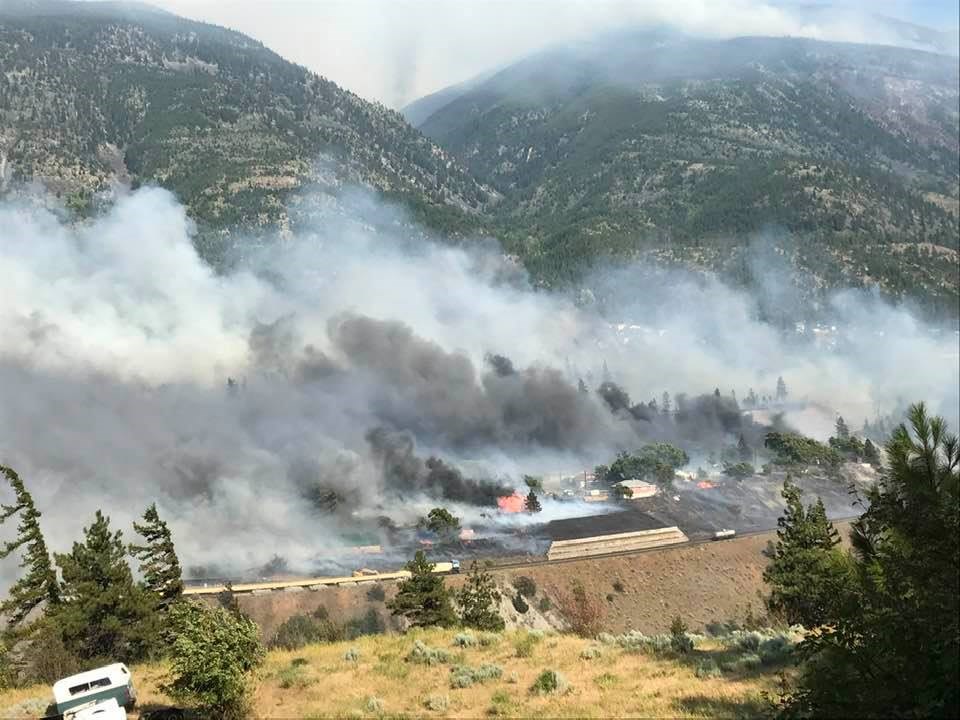In the early stages of the COVID-19 pandemic, the use of the words “state of emergency” by the provincial government may have been new to many British Columbians. For those residents whose daily lives are annually affected by forest fires, the phrase was not unusual.
In spite of the recent evident reminders about how our activities can change after a natural disaster, the behaviour of British Columbians over the past couple of years has not kept up with the times.
Research Co. and Glacier Media queried the province’s residents in May 2019 about three important ways to prepare for an emergency. When we asked the same questions this year, the proportion of British Columbians who have taken the recommended steps fell markedly.
Across the province, only 22% of British Columbians have established a meeting place with family or friends in the case of an emergency, down 13 points since 2019. This is a crucial component of any plan, as an emergency can arrive at a moment when adults are at work and children are at school. Damages to roads and bridges may make meeting at home impossible.
Just under three in 10 of the province’s residents (28%, and down 11 points in two years) have prepared a plan that includes how to get in touch with family or friends in case of an emergency.
Finally, only 38% of British Columbians have bought or prepared an emergency kit with supplies they might need in case of an emergency, down six points in two years.
While the drop in preparedness is worrisome across the entire province, residents of southern B.C. are way behind the already low provincial average: only 30% of residents have acquired an emergency kit, 24% have designed a plan and 14% have established a meeting place.
Part of this relaxed attitude towards emergencies is based on a significantly high level of trust in elected officials knowing what to do. More than three in five British Columbians (63%) have confidence in the ability of their municipal government to deal with a natural disaster, a serious accident, or an incident caused by human error.
Our trust in emergency management is slightly higher for the provincial government (66%) and slightly lower for the federal government (59%).
When asked about 10 emergencies that could affect them personally, more than seven in 10 British Columbians say they are “very concerned” or “moderately concerned” about a fire (80%) or an earthquake (72%).
A majority of the province’s residents are also worried about the effect high winds (58%), intense rainfall (53%) or a flood (51%) could have on their lives, while fewer are preoccupied with a toxic spill (47%), heavy snowfall (47%), a terrorist attack (46%), a tsunami (42%) or a landslide (39%).
The notion that “the big one” is a matter of time remains on the minds of most British Columbians, with 75% saying it is “very likely” or “moderately likely” that an earthquake strong enough to damage buildings will occur in the province in the next 50 years.
All over the world, emergencies have tested governments in ways that are seldom imagined. This century has provided plenty of examples of hardship, such as the Indian Ocean earthquake and tsunami in 2004, Hurricane Katrina in the United States in 2005 and the floods in Western Europe just a few weeks ago. At this point, a significant proportion of British Columbians have confidence in those who will make the decisions if and when an unforeseen event occurs, but they are forgetting a vitally important element: their own role in being prepared. •
Mario Canseco is president of Research Co.
Results are based on an online study conducted from July 31 to August 3 among 800 adults in British Columbia. The margin of error, which measures sample variability, is plus or minus 3.5 percentage points, 19 times out of 20.

